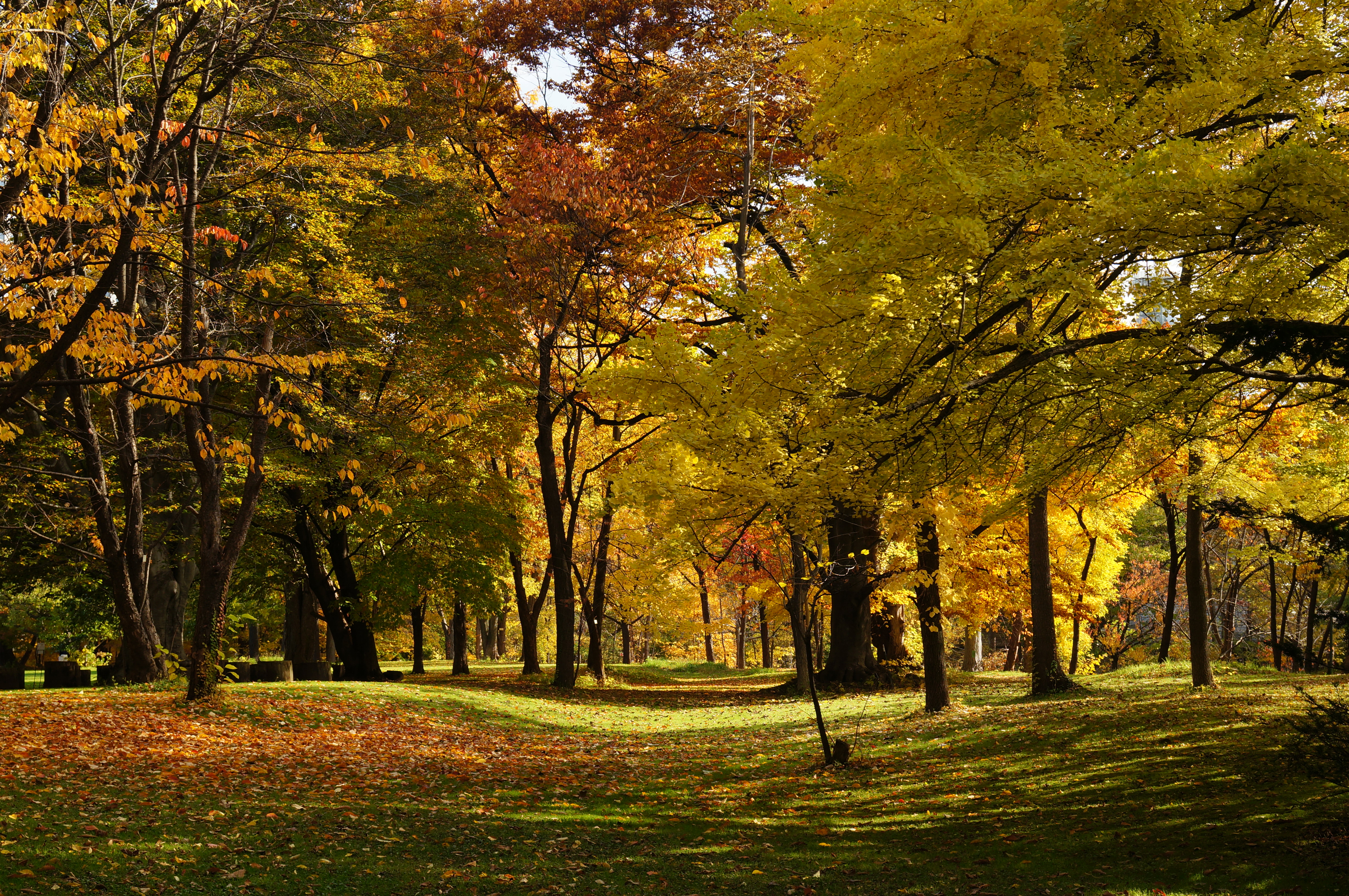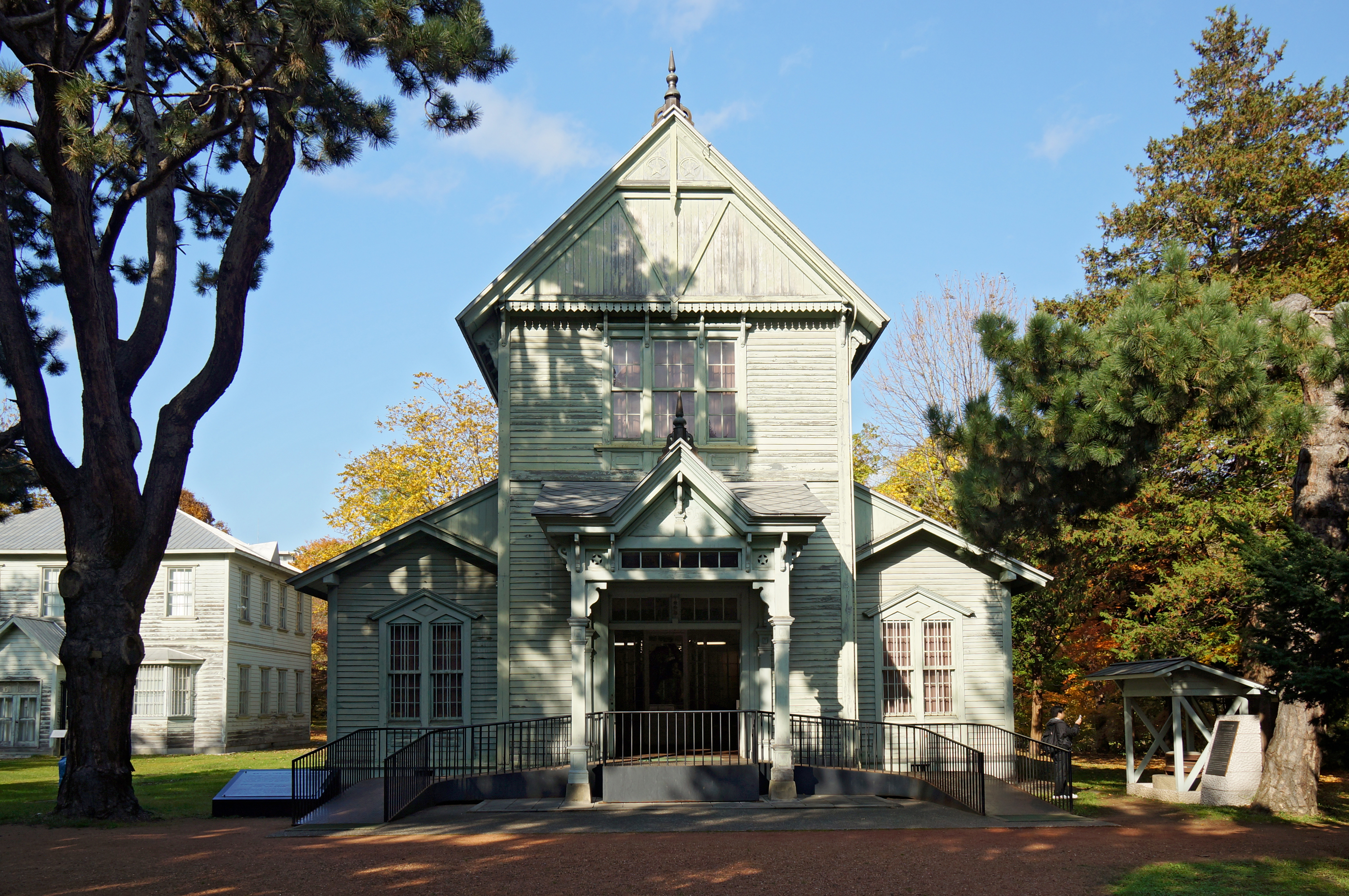Hokkaido University Botanical Gardens on:
[Wikipedia]
[Google]
[Amazon]

 The are
The are
Hokkaido University Botanical Gardens (Japanese)
* Inagawa Hironori et al., "How we coped with the Serious Damage by Typhoon No. 18 in 2004 at the Botanic Garden, {{Coord, 43, 3, 49.2, N, 141, 20, 32.9, E, region:JP_type:landmark, display=title Botanical gardens in Japan Hokkaido University Chūō-ku, Sapporo Gardens in Hokkaido Museums in Sapporo Tourist attractions in Sapporo

 The are
The are botanical garden
A botanical garden or botanic gardenThe terms ''botanic'' and ''botanical'' and ''garden'' or ''gardens'' are used more-or-less interchangeably, although the word ''botanic'' is generally reserved for the earlier, more traditional gardens, an ...
s operated by Hokkaido University
, or , is a Japanese national university in Sapporo, Hokkaido. It was the fifth Imperial University in Japan, which were established to be the nation's finest institutions of higher education or research. Hokkaido University is considered ...
. They are located at North 3, West 8, Chūō-ku, Sapporo
( ain, サッ・ポロ・ペッ, Satporopet, lit=Dry, Great River) is a city in Japan. It is the largest city north of Tokyo and the largest city on Hokkaido, the northernmost main island of the country. It ranks as the fifth most populous city ...
, Hokkaidō
is Japan, Japan's Japanese archipelago, second largest island and comprises the largest and northernmost Prefectures of Japan, prefecture, making up its own List of regions of Japan, region. The Tsugaru Strait separates Hokkaidō from Honshu; th ...
, Japan
Japan ( ja, 日本, or , and formally , ''Nihonkoku'') is an island country in East Asia. It is situated in the northwest Pacific Ocean, and is bordered on the west by the Sea of Japan, while extending from the Sea of Okhotsk in the n ...
, and open daily; an admission fee is charged.
The gardens were established in 1886 as part of the Old Sapporo Agricultural College, and are now the second oldest botanical gardens in Japan (after Koishikawa Botanical Garden
The is a botanical garden with an arboretum operated by the University of Tokyo Graduate School of Science. They are located at 3-7-1 Hakusan, Bunkyō, Tokyo, Japan, and open daily except Mondays; an admission fee is charged.
History
The T ...
). Today they form part of the university's School of Agriculture, and contain a small part of the forest formerly covering the Ishikari Plain, plus collections of over 4,000 plant species
In biology, a species is the basic unit of classification and a taxonomic rank of an organism, as well as a unit of biodiversity. A species is often defined as the largest group of organisms in which any two individuals of the appropriat ...
, including alpine plant
Alpine plants are plants that grow in an alpine climate, which occurs at high elevation and above the tree line. There are many different plant species and taxa that grow as a plant community in these alpine tundra. These include perennial grass ...
s, wild plants from Hokkaidō
is Japan, Japan's Japanese archipelago, second largest island and comprises the largest and northernmost Prefectures of Japan, prefecture, making up its own List of regions of Japan, region. The Tsugaru Strait separates Hokkaidō from Honshu; th ...
, and the oldest lilac
''Syringa'' is a genus of 12 currently recognized species of flowering woody plants in the olive family or Oleaceae called lilacs. These lilacs are native to woodland and scrub from southeastern Europe to eastern Asia, and widely and commonl ...
in Sapporo. Serious typhoon
A typhoon is a mature tropical cyclone that develops between 180° and 100°E in the Northern Hemisphere. This region is referred to as the Northwestern Pacific Basin, and is the most active tropical cyclone basin on Earth, accounting for a ...
damage was sustained in 2004.
The gardens also contain early Hokkaidō
is Japan, Japan's Japanese archipelago, second largest island and comprises the largest and northernmost Prefectures of Japan, prefecture, making up its own List of regions of Japan, region. The Tsugaru Strait separates Hokkaidō from Honshu; th ...
homes, a tropical greenhouse
A greenhouse (also called a glasshouse, or, if with sufficient heating, a hothouse) is a structure with walls and roof made chiefly of transparent material, such as glass, in which plants requiring regulated climatic conditions are grown.These ...
, and the Natural History Museum (built 1884), which exhibits Ainu
Ainu or Aynu may refer to:
*Ainu people, an East Asian ethnic group of Japan and the Russian Far East
*Ainu languages, a family of languages
**Ainu language of Hokkaido
**Kuril Ainu language, extinct language of the Kuril Islands
**Sakhalin Ainu la ...
artefacts, local archaeological and biological specimens, and the stuffed body of Taro, one of two surviving sled dog
A sled dog is a dog trained and used to pull a land vehicle in harness, most commonly a sled over snow.
Sled dogs have been used in the Arctic for at least 8,000 years and, along with watercraft, were the only transportation in Arctic areas ...
s from Japan's 1958 Antarctica
Antarctica () is Earth's southernmost and least-populated continent. Situated almost entirely south of the Antarctic Circle and surrounded by the Southern Ocean, it contains the geographic South Pole. Antarctica is the fifth-largest cont ...
mission.
See also
*List of botanical gardens in Japan
This list of botanical gardens in Japan is intended to include all significant botanical gardens and arboretums in Japan.
* Akatsuka Botanical Garden (Itabashi, Tokyo)
* Aloha Garden Tateyama (Tateyama, Chiba)
* Amami Islands Botanical Garden ( ...
References
External links
Hokkaido University Botanical Gardens (Japanese)
* Inagawa Hironori et al., "How we coped with the Serious Damage by Typhoon No. 18 in 2004 at the Botanic Garden, {{Coord, 43, 3, 49.2, N, 141, 20, 32.9, E, region:JP_type:landmark, display=title Botanical gardens in Japan Hokkaido University Chūō-ku, Sapporo Gardens in Hokkaido Museums in Sapporo Tourist attractions in Sapporo